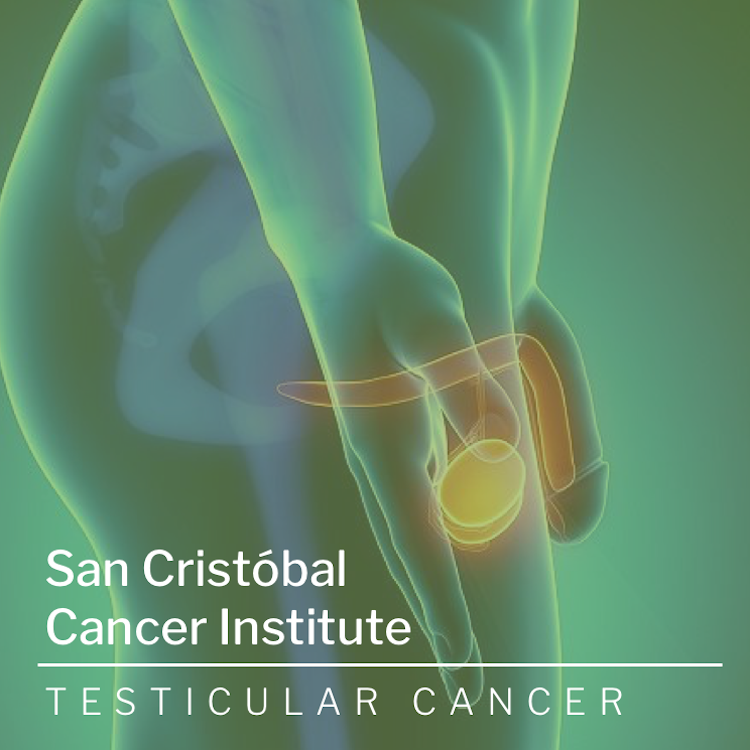
Testicular Cancer Facts

The American Cancer Society estimates that more than 9,000 new cases of testicular cancer in the United States. Although it is a relatively rare cancer, the incidence rate of testicular cancer has been increasing in the US and many other countries for several decades. The increase is mostly in seminomas. Experts have not been able to find reasons for this. The average age at the time of diagnosis of testicular cancer is about 33. This is largely a disease of young and middle-aged men, but about 6% of cases occur in children and teens, and about 8% occur in men over the age of 55.
Overview
Compared with other types of cancer, testicular cancer is rare. But testicular cancer is the most common cancer in American males between the ages of 15 and 35. Testicular cancer is highly treatable, even when cancer has spread beyond the testicle. Depending on the type and stage of testicular cancer, you may receive one of several treatments, or a combination.
Types
Treatment of testicular cancer may depend on the kind of cells involved. There are many types of cells found in the testicles, all of which can become cancerous. However, there are two main types of tumors that account for the majority of testicular cancers
- Seminoma: There are two subtypes of seminomas, and the classical (typical) seminomas are more likely to occur in men between ages of 30 and 50. Spermatocytic seminomas are less common and are found more frequently in men 55 years and older. However, both types of seminoma tumors may occur in all age groups.
- Non-seminoma: There are four main sub-types of non-seminoma tumors: embryonal carcinoma, yolk sac carcinoma, choriocarcinoma, and teratoma. These types of tumors generally occur between the teen years and early 40s. They also tend to grow and spread more quickly than seminomas.
Testicular cancer may involve one or both kinds of tumors.
Symptoms
Signs and symptoms of testicular cancer include:
- A lump or enlargement in either testicle
- A feeling of heaviness in the scrotum
- A dull ache in the abdomen or groin
- A sudden collection of fluid in the scrotum
- Pain or discomfort in a testicle or the scrotum
- Enlargement or tenderness of the breasts
- Back pain
Cancer usually affects only one testicle. See your doctor if you detect any pain, swelling or lumps in your testicles or groin area, especially if these signs and symptoms last longer than two weeks.
Diagnosis
In some cases men discover testicular cancer themselves, either unintentionally or while doing a testicular self-examination to check for lumps. In other cases, your doctor may detect a lump during a routine physical exam. To determine whether a lump is testicular cancer, your doctor may recommend:
- Ultrasound. A testicular ultrasound test uses sound waves to create an image of the scrotum and testicles. During an ultrasound you lie on your back with your legs spread. Your doctor then applies a clear gel to your scrotum. A hand-held probe is moved over your scrotum to make the ultrasound image. An ultrasound test can help your doctor determine the nature of any testicular lumps, such as whether the lumps are solid or fluid-filled. An ultrasound also tells your doctor whether lumps are inside or outside of the testicle.
- Blood tests. Your doctor may order tests to determine the levels of tumor markers in your blood. Tumor markers are substances that occur normally in your blood, but the levels of these substances may be elevated in certain situations, including testicular cancer. A high level of a tumor marker in your blood doesn’t mean you have cancer, but it may help your doctor in determining your diagnosis.
- Surgery to remove a testicle (radical inguinal orchiectomy). If it’s determined that the lump on your testicle may be cancerous, surgery to remove the testicle may be recommended. Your removed testicle will be analyzed to determine if the lump is cancerous and, if so, what type of cancer.
Stages
Once your doctor confirms your diagnosis, the next step is to determine the extent (stage) of the cancer. To determine whether cancer has spread outside of your testicle, you may undergo:
- Computerized tomography (CT) scan. CT scans take a series of X-ray images of your abdomen, chest and pelvis. Your doctor uses CT scans to look for signs that cancer has spread.
- Blood tests. Blood tests to look for elevated tumor markers can help your doctor understand whether cancer likely remains in your body after your testicle is removed. After these tests, your testicular cancer is assigned a stage. The stage helps determine what treatments are best for you.
The stages of testicular cancer are indicated by Roman numerals that range from 0 to III, with the lowest stages indicating cancer that is limited to the area around the testicle. By stage III, the cancer is considered advanced and may have spread to other areas of the body, such as the lungs.
Treatment
The options for treating your testicular cancer depend on several factors, including the type and stage of cancer, your overall health, and your own preferences.
Surgery: Operations used to treat testicular cancer include:
- Surgery to remove your testicle (radical inguinal orchiectomy) is the primary treatment for nearly all stages and types of testicular cancer. To remove your testicle, your surgeon makes an incision in your groin and extracts the entire testicle through the opening. A prosthetic, saline-filled testicle can be inserted if you choose. In cases of early-stage testicular cancer, surgical removal of the testicle may be the only treatment needed.
- Surgery to remove nearby lymph nodes (retroperitoneal lymph node dissection) is performed through an incision in your abdomen. Your surgeon takes care to avoid damaging nerves surrounding the lymph nodes, but in some cases harm to the nerves may be unavoidable. Damaged nerves can cause difficulty with ejaculation, but won’t prevent you from having an erection.
Radiation therapy: Radiation therapy uses high-powered energy beams, such as X-rays, to kill cancer cells. During radiation therapy, you’re positioned on a table and a large machine moves around you, aiming the energy beams at precise points on your body. Radiation therapy is a treatment option that’s sometimes used in people who have the seminoma type of testicular cancer. Radiation therapy may be recommended after surgery to remove your testicle.
Chemotherapy: Chemotherapy treatment uses drugs to kill cancer cells. Chemotherapy drugs travel throughout your body to kill cancer cells that may have migrated from the original tumor. Chemotherapy may be your only treatment, or it may be recommended before or after lymph node removal surgery.
Resources
San Cristobal Cancer Institute offers a wide array of options to help our patients feel calm and supported during the process of screening, diagnosis and treatment, as well as getting back to life after cancer. Browse our alternatives for patients – including financial aid for those eligible – in our Patient Resources section.
If you’d like to learn more about Testicular Cancer through our San Cristóbal Education Resources, attend our events or learn about our Cancer Center, please contact us.
Knowledge is Power.
Education is one of our strongest tools at San Cristóbal Cancer Institute, empowering patients and their families with complete and updated information about more than a dozen types of cancer and providing first-hand knowledge through our dedicated team of cancer experts. If you’d like to know more, please get in touch with us. We look forward to offering you and your family powerful cancer awareness and the most comprehensive care.
